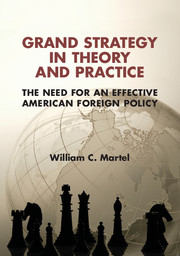Book contents
- Frontmatter
- Dedication
- Contents
- Acknowledgments
- 1 Introduction
- 2 Contemporary Classics in American Grand Strategy
- Part I Makers of Grand Strategy
- Part II Makers of American Grand Strategy
- 7 Building Domestic Foundations of American Power: Washington to Lincoln
- 8 Restraining Sources of Disorder: Theodore Roosevelt to Franklin Delano Roosevelt
- 9 Reinforcing Alliances and Partnerships: Truman to Reagan
- 10 Drifting between Principles: Bush to Obama
- Part III Conclusion
- Notes
- Index
9 - Reinforcing Alliances and Partnerships: Truman to Reagan
Published online by Cambridge University Press: 05 January 2015
- Frontmatter
- Dedication
- Contents
- Acknowledgments
- 1 Introduction
- 2 Contemporary Classics in American Grand Strategy
- Part I Makers of Grand Strategy
- Part II Makers of American Grand Strategy
- 7 Building Domestic Foundations of American Power: Washington to Lincoln
- 8 Restraining Sources of Disorder: Theodore Roosevelt to Franklin Delano Roosevelt
- 9 Reinforcing Alliances and Partnerships: Truman to Reagan
- 10 Drifting between Principles: Bush to Obama
- Part III Conclusion
- Notes
- Index
Summary
This chapter focuses on the United States as a great power during the Cold War. Following World War II, America proved itself to be the world’s strongest democratic nation and the “leader of the free world.” By the middle of the twentieth century, the United States had established itself as a political, economic, and military superpower whose grand strategy was devoted to containing the Soviet Union and the geostrategic challenges that it posed to the United States and the West. As the Cold War progressed, America’s grand strategy moved from strictly containing the USSR to efforts to outspend the USSR and ultimately weaken its economic and military sources of power. This era also marks the beginning of America’s dialogue with states such as China.
The Cold War is often used as an example of the highest standard in the conduct of American grand strategy. The strategy of containment was articulated clearly, its conceptual basis was readily understandable to both the American people and foreign policy experts, and it was based on intimate knowledge of the adversary. Furthermore, its initial articulation was by one person, George Kennan, who crafted an argument that had the virtues of internal consistency and unity. As for its implementation, the grand strategy of containment experienced several minor doctrinal changes, but the overall strategic concept remained remarkably consistent over the course of seven presidential administrations.
- Type
- Chapter
- Information
- Grand Strategy in Theory and PracticeThe Need for an Effective American Foreign Policy, pp. 244 - 299Publisher: Cambridge University PressPrint publication year: 2015



